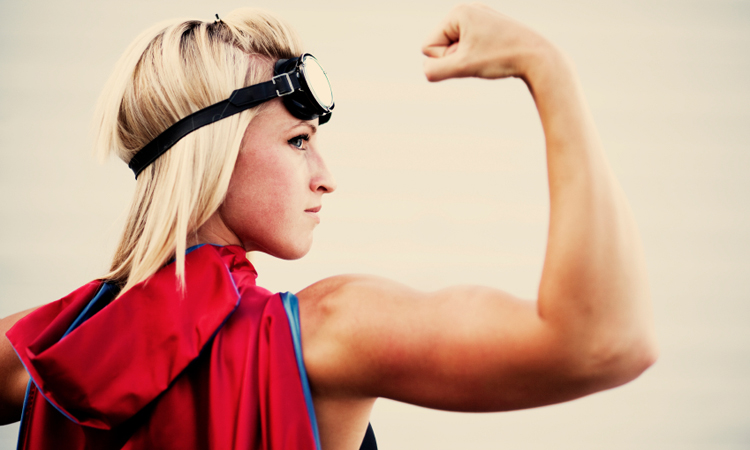
Imagine being horribly afraid of something—say, snakes—and being told to willingly choose to bring a snake closer and closer to you. Could you put your fear aside and do it?
Researchers at the Weizmann Institute in Rehovot, Israel, asked subjects to do just that. Participants placed near an fMRI machine were given the option to advance (via a pushed button that controlled a conveyor belt) either a live snake or a cuddly stuffed bear. The researchers’ focus centered on subjects who fearfully pushed the button six or seven times to move the snake farther from them; when they pushed the button to advance the snake toward them, it was perceived as an act of courage.
Published in the journal Neuron, results of the fMRI data showed something interesting: Increased activity of a single brain region, the subgenual anterior cingulate cortex (sgACC), correlated to high levels of fear during moments when subjects chose to advance the conveyor belt versus when they chose to make it recede.
Said Uri Nili, one of the study’s principal investigators, “We think the sgACC contributes to courageous behavior by dampening fear-related bodily arousal, thus enabling the carrying out of an action despite subjectively experienced fear.”
While other studies corroborate that the sgACC plays an important role in regulating the brain’s emotional circuitry, the Weizmann study was the first to prove that sgACC brain activity is necessary for a person to take action despite fear. As sgACC activity increased, the sweat-related skin conductance response (a universal measure of fear-related physical arousal) reduced, as did activity in the amygdala, the brain’s threat detection center.
Nili and his team suspect that the sgACC’s dampening down of the body’s fear-related response allows the brain to overcome feelings of fear and take action. The most activity in the sgACC occurred when subjects chose the “advance” option, signifying that this reaction related to a mental effort to overcome fear.
Using Science to Buff Up Your Inner Hero
Mark Twain once wrote, “Courage is resistance to fear, mastery of fear—not absence of fear.” If you’re feeling like your inner hero could use a shot of courage, try these three daily practices to train yourself to be more brave:
- Give yourself permission. So often the fear we feel is self-induced. With super-sized and inappropriate expectations, plus paralyzing criticisms and (self-) judgments, we turn many events, experiences, and desires into lively, writhing snakes. Busting this process can start as simply as giving yourself permission to attempt a behavior, meet an unexpected outcome, regroup, and try again. Offering yourself a sense of freedom can reduce feelings of stress and also support your sgACC’s activity, allowing you to, in the words of fear expert Susan Jeffers, “feel the fear and do it anyway.”
- Do what’s uncomfortable. Deliberately placing yourself in awkward and unfamiliar moments (as the Weizmann researchers did with their subjects) offers you an opportunity to practice accessing courage. Often we shy away from things that create a stress- or fear-related response. Instead, be bold: Willingly move toward those moments as a way to challenge yourself. You can even use the experiment’s options: Move closer to something that feels uncomfortable, then allow yourself to move away from it—and then closer again. This will establish a process that initiates, builds, and trains neural pathways of approach despite discomfort.
- Change your story. What we think influences what we feel. In the case of fear, we might think, for example, “Around snakes I’m in great danger,” and so our amygdala picks up on the idea of danger and goes to work activating the sympathetic nervous system’s survival response. But if we change the story to, “Around snakes I’m perfectly safe,” then we have the opportunity to feel around snakes the way we feel around teddy bears. The snakes may still be dangerous (and you have to take precautions to be safe), but you create a mental approach that allows you to take action. The same is true for anything that brings you fear; when you change your mind about how you perceive it, you change how your brain responds to it.
Accessing your inner hero takes courage to go beyond your (and others’) status quo in ways that are challenging, shocking, and life-altering. Throughout life you can do all the best research, make all the “right” decisions, conscientiously build the most appropriate life—and still discover you’ve somehow gone off track. The more you make choices and take actions that deliberately engage your brain’s process for allowing you to act despite fear, however, the more you develop courage. Then something really exciting happens: You redefine who you are.



1 Comment
Julia Miller
This is a great study to validate how important the mind can be at over coming fears whether they be real or perceived. It is impressive to see how there is actually a part of our brain available to us to have courage. Maybe we need to engage this a bit more everyday to start operating less from fear and more from courage and love.